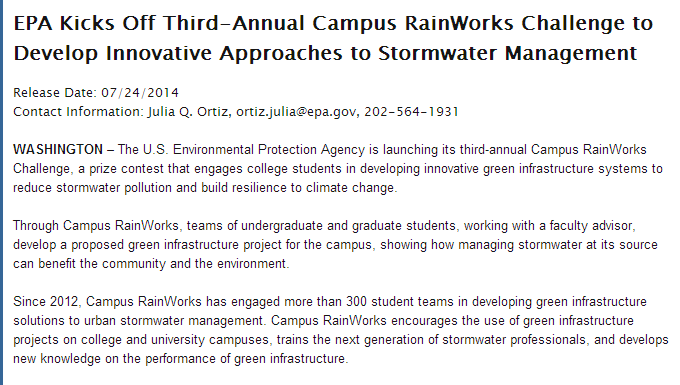In times of stormy weather, rainwater can be very difficult to manage and can even lead to massive flooding. Stormwater systems are designed and built to manage rainfall and direct it to other waterways to avoid polluting lakes and other bodies of water. Depending on the design, such systems can also store storm water underground without causing any floods until the storm subsides. Below is an excerpt from an article on the Environmental Protection Agency (EPA) website:
Stormwater is one of the most widespread challenges to water quality in the nation. Large volumes of stormwater pollute our nation’s streams, rivers and lakes, posing a threat to human health and the environment and contributing to downstream flooding.
Green infrastructure decreases pollution to local waterways by treating rain where it falls and keeping polluted stormwater from entering sewer systems. Green infrastructure reduces water pollution while increasing economic activity and neighborhood revitalization, job creation, energy savings, and open space. Green infrastructure builds resilience to the impacts of climate change, particularly by reducing the burden on local water infrastructure. Green infrastructure tools and techniques include green roofs, permeable materials, alternative designs for streets and buildings, trees, rain gardens and rain harvesting systems. Communities are increasingly using innovative green infrastructure to supplement or substitute for “gray” infrastructure such as pipes, filters, and ponds.
The EPA is looking for innovative methods or systems that could manage the outflow of water by way of building infrastructure that would also make use of nature or trees. While regular storm water systems could be beneficial in handling storm water, a system that would serve two purposes needs further development.
Given the modern engineering marvels in many infrastructures, devising efficient stormwater systems would not be that far behind. In fact, there are existing systems that are both efficient and environment-friendly, which make use of soil instead of trees to trap stormwater. An example of such system is HydroLogic Solutions’ StormChamber that can be utilized in residential or commercial areas.
Using an aptly-designed network of pipelines and microorganisms in the soil as a natural filtration system, the outflow of water is managed and stored while pollutants in the water that could damage bodies of water are cleaned out.
(Source: EPA Kicks Off Third-Annual Campus RainWorks Challenge to Develop Innovative Approaches to Stormwater Management, EPA, July 24, 2014)






